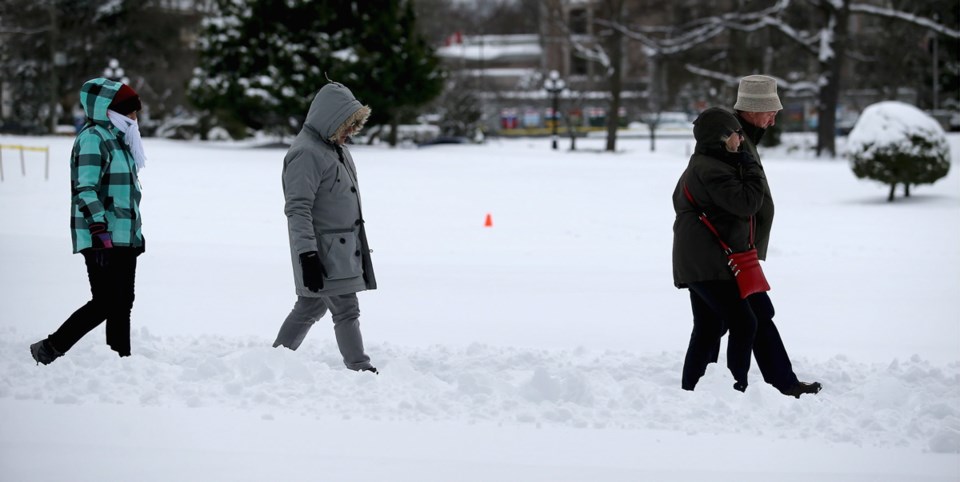A commentary by a trained urban planner who has worked in transit and multi-modal planning for 30 years.
Were I to make an argument regarding the modal prejudice of the City of Victoria it would start with a defence of the pedestrian. In most cities there is a modal hierarchy stated by council, particularly those in a social-justice fight against vehicles, that goes like this:
- Pedestrian
- Cyclist
- Transit user
- Auto driver
Typically, there is also goods movement, which fits before or after the auto driver.
It has often been said that a cycling and transit journey is merely an interrupted pedestrian journey.
This means that to entice users, the pedestrian infrastructure on either end of the journey must create a positive experience or the journey is not viewed positively as a whole.
In inclement weather this is particularly true when infrequent users of transit opt to leave their car and give the bus a chance to prove itself.
This past few days have exposed the modal preference in the city to be the cyclist bar none (even more than the Fort Street bike lanes that impacted multiple transit routes or the narrow traffic lanes on lower Pandora to fit in bike lanes have proven that notion).
Photographs of snow-covered motor-vehicle lanes next to completely bare dedicated cycling lanes are evidence of that preference in recent days.
However, this is not my issue. It is the disregard for the pedestrian that is most troubling. Homeowners who don’t clear sidewalks are one thing but a city that disregards the needs of the pedestrian is another.
On my travel to work I walk, take the bus, and walk again. The walk to the bus stop in Oak Bay was not an enjoyable experience between snow-choked sidewalks and icy roads. However, this I expect. It shows the character of the homeowner and their concern for fellow residents.
Using the bus was a greater challenge than should be the case. The bus appeared and the operator showed great caution approaching the stop and looking for a place to let us on.
Why the concern? Because of the snowdrifts blocking the bus stop.
This was the case all the way into downtown where there might be a small path to the front door, but the back door was presented with a massive pile of snow from street plowing.
The walk through downtown and across the Johnson Street Bridge was no better. Snowbanks along Douglas Street, no clearance of any corner (though workers were diligently cleaning parking spaces) so pedestrians are forced to dance through slushy piles mixed with black ice.
The approach to the bridge made me laugh. Standing at the corner next to Swans, the bike pathway was cleared, but not the pedestrian crossing.
The bridge approach was nothing less than a sheer coat of ice all the way up the perforated bridge deck — not a speck of salt.
Now I fully understand the rationale for a handrail — to assist pedestrians as they attempt to ascend the bridge whilst trying not to appear that they are in some comedy show, showing people sliding around on black ice.
I would suggest that the actual transportation pyramid for the City of Victoria is the following:
- Bikes
- Cars
- Goods movement
- Pedestrians
- Transit
If the goal is to create a modal system of choice, then surely how the pedestrian is treated is of paramount importance to achieving that goal.
We can and should do better by them.



